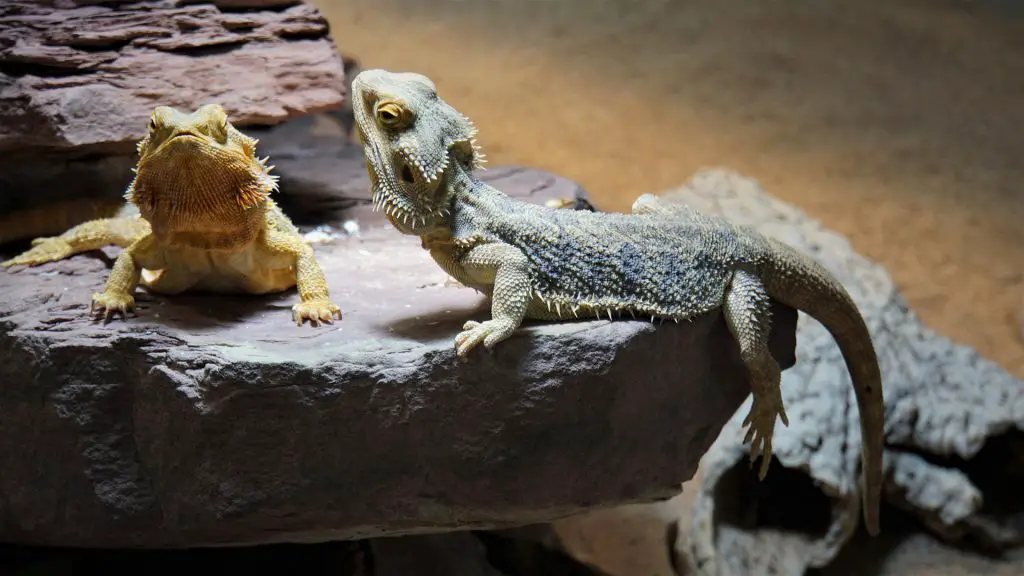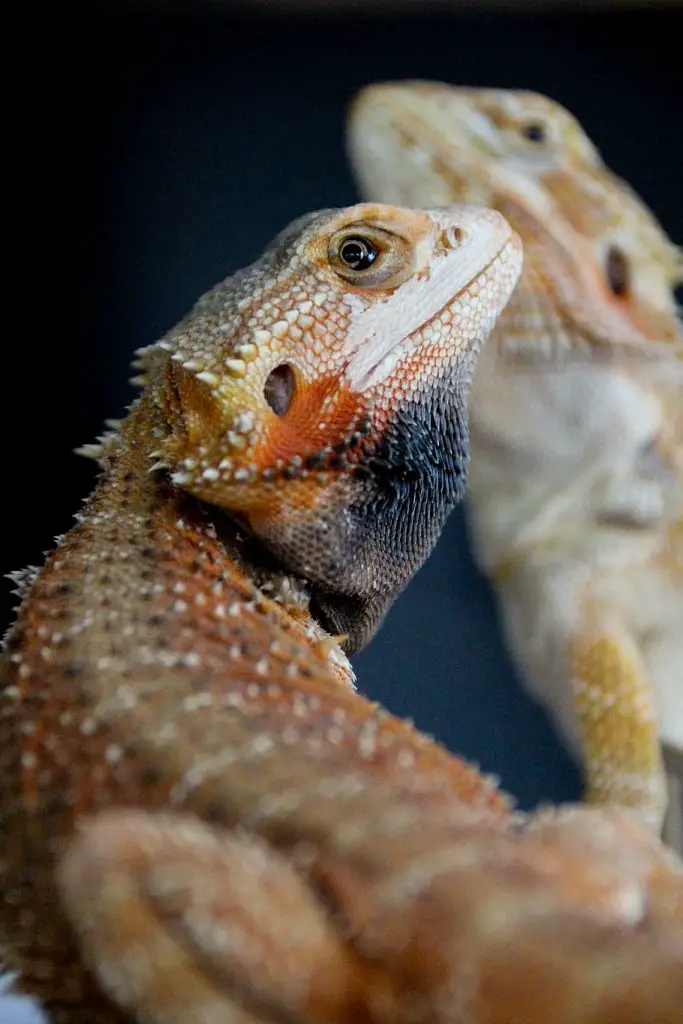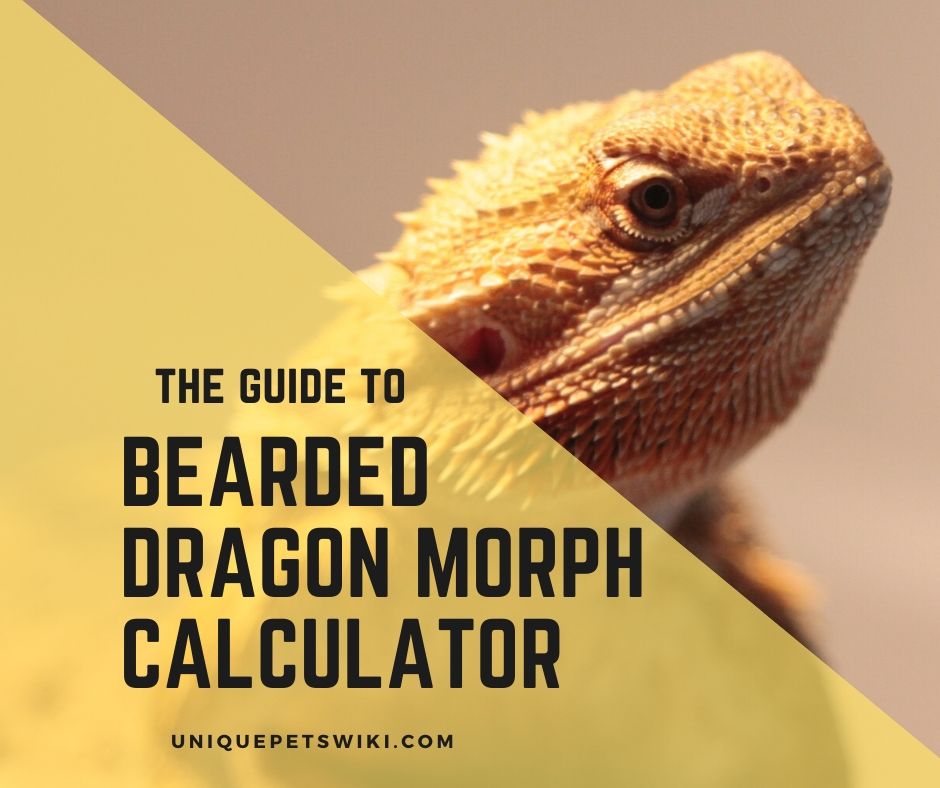Ever wondered, what will be the results of crossing a particular bearded dragon morphs with a different one? Well, a bearded dragon morph calculator is the tool for you.
Bearded dragon morph calculator is popular among breeders and some dragon enthusiasts, and helps them to see the results of crossing certain traits in the beardies.
In this short article, I will talk about the genetics behind some morphs, how to use the morph calculator, and more.
Let’s deep dive into the article for detailed information.
Contents
Basics of Bearded Dragon Morph Genetic
Offsprings appear the way they are in terms of their color and pattern because of the genes they inherited from their parents. Each parent, by chance, contributes 50% of the genes to the offspring.
Parents transmit discrete genes to their offspring, and this explains why the offsprings may look similar or different from their parents.
Genes are located in specific points along the chromosome, a structure present in the nucleus of the cell.
Typically, chromosomes occur in pairs. Also, genes occur in pairs forming what is called an allele. Each allelic gene is present in one member of the chromosome on the same locus and opposite to each other.
The two genes may be distinct or identical.
The genes segregate into gametes, and the probability of the offspring receiving a gamete from each parent is a half.
Genetical Related Terms

Having some basics on how transmission of genes from parents to offspring takes place, let me now explain a few of the terms related to genetics.
Homozygous
Homozygous refers to the condition where an animal possesses allelic genes that are identical. The two genes may be dominant or recessive.
Heterozygous (Het)
Het is a short form of heterozygous, and it is a condition where an organism contains different allelic genes in the homologous chromosome.
Het condition is not visually displayed, but the organism appears normal.
If a bearded dragon has X% Het for a trait, it shows the chances of that particular beardie carrying that trait, not the probability of its offspring possessing the trait itself.
Recessive
These are genetic traits that are expressed phenotypically when they are only in homozygous condition. It means that both parents must be carrying the trait.
The parents can be the carriers of the trait in heterozygous form, or one parent is Het and the other one homozygous for the trait. It doesn’t need to be phenotypically visible to them.
It is only a certain percentage of the offsprings that will express the trait.
Co-dominant
One parent is homozygous for dominant genes, and another one is homozygous for recessive genes, and the offspring is an intermediate between the parents.
No babies resemble the parents. Co-dominant alleles equally express themselves in the phenotype.
If both parents possess the co-dominant genes, a certain percentage of offspring will be co-dominance. Dunner and Silkbacks are the two common bearded dragon morphs that have co-dominant genes.
New to bearded dragon? Check out the bearded dragon care sheet now! We had listed out all the things you need to know about bearded dragons as pets. Check it now!
Dominant
Dominant genes are expressed phenotypically in the heterozygous or homozygous condition. If a dragon is a carrier of dominant genes, they will always show the trait.
Bearded Dragon Genetic Probabilities

Here, we will learn how to come up with a particular morph from different combinations of morphs.
The first thing is to select individual dragons that show signs of a trait which are bred to make the feature more striking in the offsprings.
Hypomelanistic (Hypo) Morph Genetics
Hypomelanistic beardies have a low amount of melanin in the skin, where the dark pigment is diminished and becomes more bluish. A hypo bearded dragon has bright nails and a blue shoulder pad.
Normal Morph (MM) x Hypo (mm)
| Gametes | M | M |
| m | Mm | Mm |
| m | Mm | Mm |
Hypo is a recessive gene and is passed to the offspring in het form; all the offsprings are 100% Het.Hypo.
Het.Hypo (Mm) x Hypo (mm)
| Gametes | M | m |
| m | Mm | mm |
| m | Mm | mm |
50% of the offsprings are Het. Hypo, and 50% Hypo.
Hypo (mm) x Hypo (mm)
| Gametes | m | m |
| m | mm | mm |
| m | mm | mm |
The offsprings are 100% Hypomelanistic trait.
Translucent (Trans) Morphs Genetic
Trans bearded dragons possess a recessive translucent gene. The skin lacks the white pigment, and this makes the beardie, especially babies, to be see-through.
They have solid black eyes compared to normal beardies with brown eyes and a black pupil.
Normal Dragon (NN) x Translucent (nn)
| Gametes | N | N |
| n | Nn | Nn |
| n | Nn | Nn |
All the offsprings are 100% heterozygous for the translucent trait.
Het.Trans (Nn) x Trans (nn)
| Gametes | N | n |
| n | Nn | nn |
| n | Nn | nn |
50% of the offsprings are Heterozygous for the trans trait, and 50% are entirely Trans.
Trans (nn) x Trans (nn)
| Gametes | n | n |
| n | nn | nn |
| n | nn | nn |
All the offsprings are 100% Trans; they are homozygous recessive.
New to bearded dragon? Check out the bearded dragon care sheet now! We had listed out all the things you need to know about bearded dragons as pets. Check it now!
Leatherback Morph Genetics
Leatherbacks have smooth skin, and the size of the spike is reduced. Compared to a typical dragon with numerous bumpy scales, the leatherback has small scales, and the skin is smooth to touch.
Normal (HN HN) x Leatherback (HN HL)
| Gametes | HN | HN |
| HN | HNHN | HNHN |
| HL | HNHL | HNHL |
50% of the offsprings are normal beardies (HNHN), and 50% are leatherback beardies (HNHL).
Leatherback x Leatherback
| Gametes | HN | HL |
| HN | HNHN | HNHL |
| HL | HNHL | HLHL |
25% of the offspring are normal, 50% trans, and 25% are Silkback bearded dragons.
American Smoothie Morph Genetics
American smoothie bearded dragons are almost the same as the leatherbacks, but each possesses a different gene for its smoothness.
Smoothies have tiny spikes on the side of the tail, while leatherbacks have a smooth tail.
Normal (CACA) x Smoothie (CACS)
| Gametes | CA | CA |
| CA | CACA | CACA |
| CS | CACS | CACS |
A cross between a normal and American smoothie bearded dragon produces 50% normal and 50% smoothie babies.
American smoothie (male) x American Smoothie (female)
| Gametes | CA | CS |
| CA | CACA | CACS |
| CS | CACS | CSCS |
Pairing two American smoothie dragons produce 25% normal dragons, 50% Smoothies, and 25% American Silkback bearded dragons.
Bearded Dragon Morph Calculator
Bearded dragon morph calculator allows you to calculate the outcomes of pairing dominant, co-dominant or recessive morph genes
You will only need to click on the drop-down menus, and the calculator displays various morphs options where you can choose a male and female morph of your choice.
The calculator shows the genetic possibilities right away in the genetic outcome section.
You can search for the results of breeding one or more traits for each parent.
Another good thing about this calculator is that it will also show you high-quality images of all the possible offsprings after pairing.
Using the calculator and interpreting the results will be much easier now that you have some excellent knowledge about the genetics of common bearded dragon morphs.
Conclusion
A bearded dragon morph calculator makes the genetic calculations much more manageable. I hope you now understand what the morph calculator does and how to use it.
Once you know how to fill in the male and female sections, the calculator breaks down things instantly and correctly.
It is a friendly tool that is easily used by the breeders and bearded dragon enthusiasts. Download a bearded dragon morph calculator and make genetic calculations more fun. I hope you found the article to be more helpful to you.

Amazing information.
Thank you for your feedback, we will improve our articles to help all pet lovers :love: